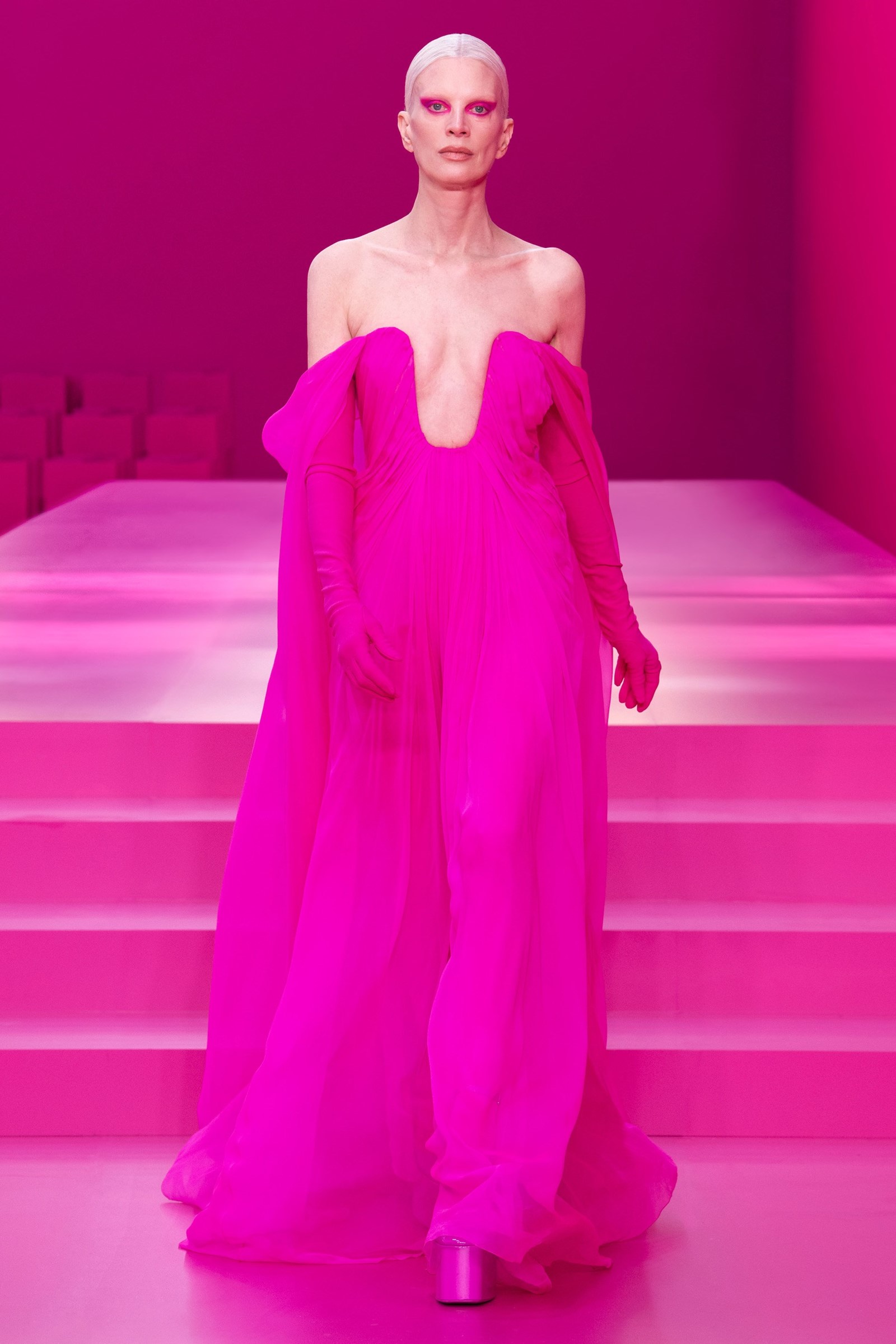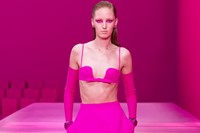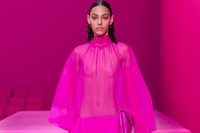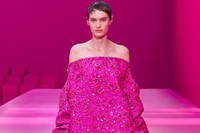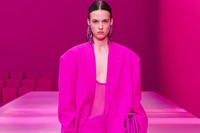Pink was glowing out from the jambs of the doors of the salon on the Place Vendôme where Pierpaolo Piccioli prepares his Valentino shows in Paris. It looked a little like an alien abduction was running its course. That’s how intense Valentino’s specific shade of pink is – indeed, when I say specific shade, it’s actually a new Pantone officially titled ‘Valentino Pink PP’. And it coated almost everything in Piccioli’s Autumn/Winter 2022 collection – outlining the eyes, backdropping the models on the catwalk, and soaking the clothes. Of course, it was incredibly precise: Piccioli is one of fashion’s great colourists, following in the footsteps of Christian Lacroix and Yves Saint Laurent. He combines colours in ways like no others: but here, he decided to go just for one, with razor-sharp focus.
“I thought of Lucio Fontana, and his way of cutting the toile of his paintings in order to find a new space, a new dimension,” Piccioli said. “I wanted a moment of reflection … I felt I had to use less. Monochrome artists used to use one colour in order to give visibility to other things.” Here, the visibility was to surface detail and texture, silhouette, form, ambitious and varied shapes – disparity anchored together by that singular colour. Piccioli roamed free with embroideries and embellishments, with lace appliqué and three-dimensional flower corsages, bubbly cloqués and sequins and feathers. The bodies were often smothered, hands too in gloves, covering up everything bar the face to force our attention two ways: to the sumptuous surfaces of the clothes but, more importantly for Piccioli, to the faces of the models. “It’s like a Renaissance portrait,” he reasoned, of a dress with a gently swelling neckline, carving a model’s shoulders so she resembled a marble bust floating in space.
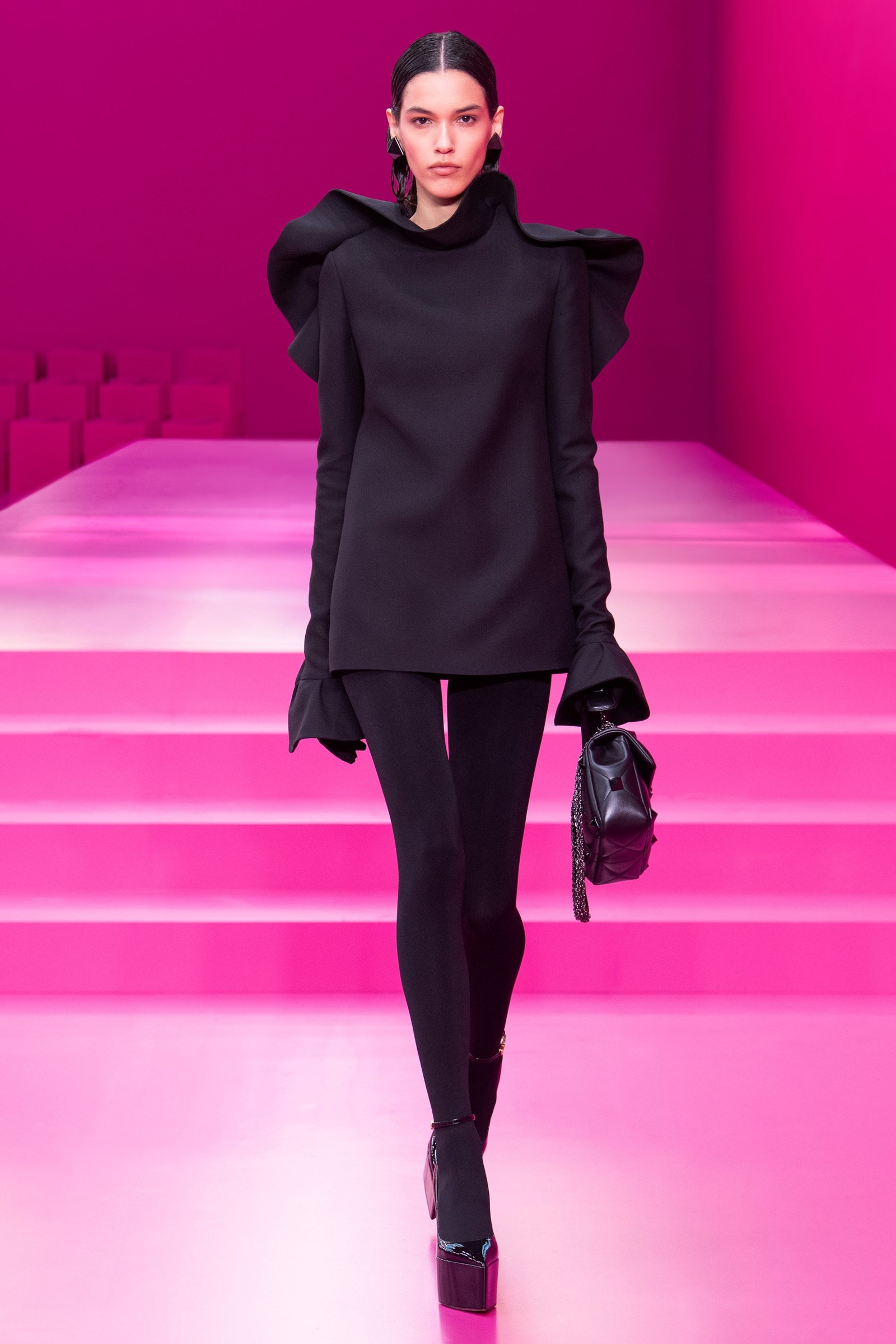
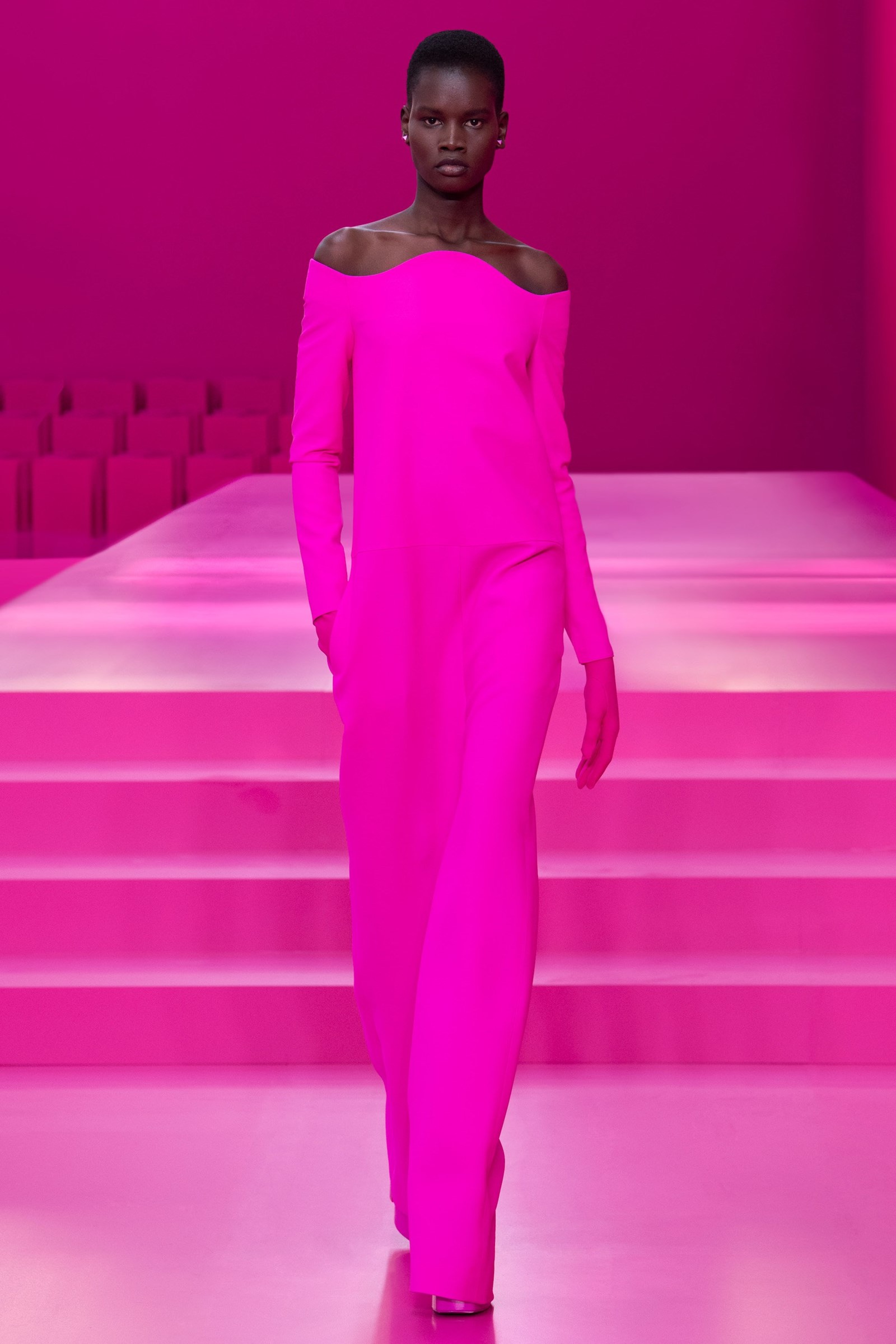
Piccioli’s moodboard contained images of archive couture – including photographs of Valentino’s own past, knotted bows, lace gowns, Claudia Schiffer in a vast black ballgown with a swooping neckline from Autumn/Winter 1995 – but all under a pink gel. It reworked the images in strange ways: a carved-out gown punctuated with knotted bows suddenly lost its bell-skirted shape; its decoration jumped out, a new focal-point. “I wanted to use one colour to highlight fashion as cut, design, silhouette, shapes, volumes, textures,” Piccioli reasoned. “You’re kind of obliged to see more. To go a bit deeper.”
There’s something kind of couture about those Fontana canvases, about their transformation from a flat two-dimensional image into a three-dimensional object through the simple act of cutting fabric. The canvases were often lined in black gauze, emphasising the darkness behind the slices to create a sense of illusion and depth. Piccioli echoed that idea with a sequence of black Valentino outfits, punctuating the pink. They seemed like echoes or shadows of the other outfits, allowing our eyes to adjust.
Of course, there’s a comment to be made on viewing the world through rose-tinted glasses, on positive outlooks, on hope – which seems relevant, and resonant, and needed. Pink is also a colour inherently associated with love – universal love, of oneself and of others. As the Valentino show began, Piccioli’s voice read out a message. It ended with a simple and equally universal message: “Our thoughts go to those who are suffering. We see you, we feel you, and we love you. Because love is the answer, always.”
